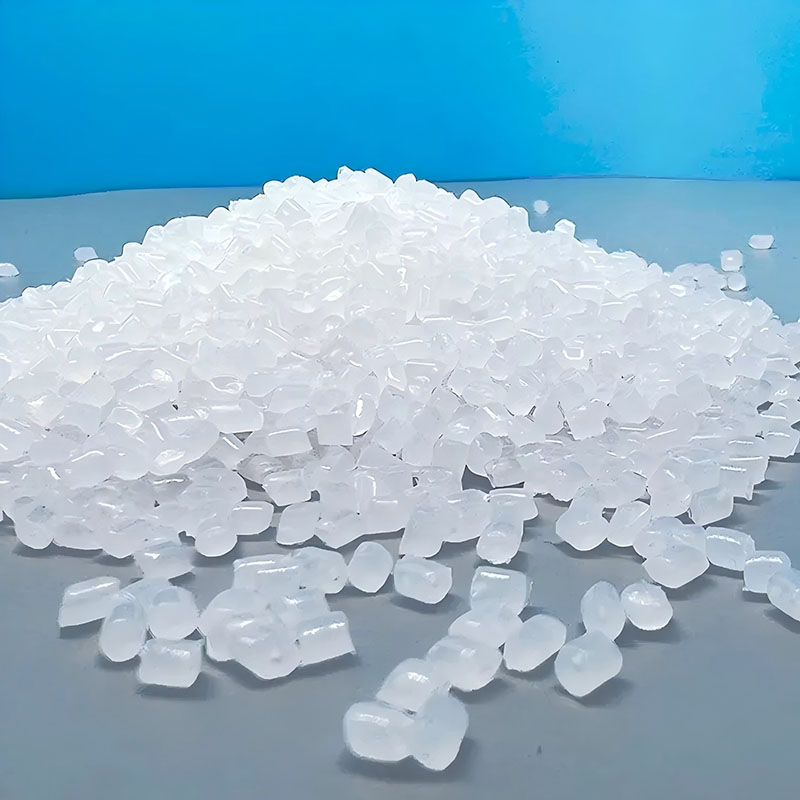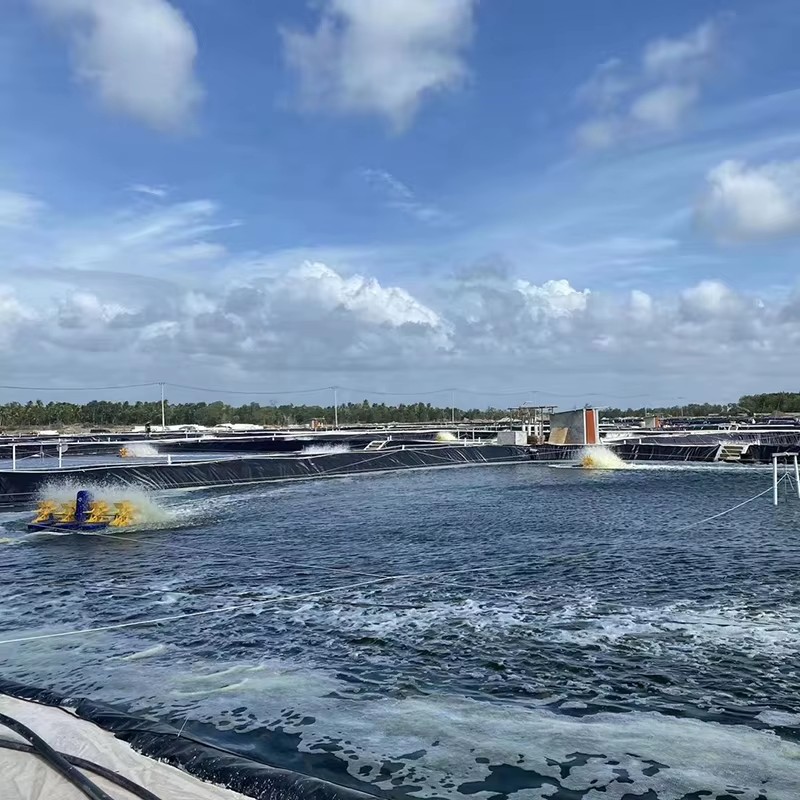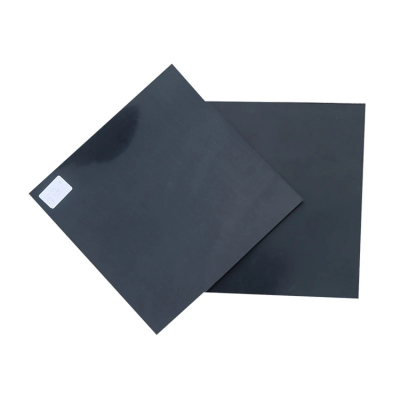Does Geomembrane Thickness Directly Determine the Durability of Anti-seepage Systems?
In the anti-seepage industry, project teams always end up circling back to one question—whether they’re planning landfills, building irrigation canals, or setting up small water tanks for farms. The question is: “If we go with a thicker geomembrane, will the anti-seepage system definitely last longer? No exceptions?”
It’s easy to see why people think that way. In daily life, thicker things usually hold up better—thicker rubber hoses don’t kink or break as much, and those heavy-duty thick plastic bags can carry more without tearing. So it makes sense to apply that logic to geomembranes, but real life isn’t that straightforward. Geomembranes work in all sorts of unpredictable spots: they’re out in the sun all day, buried under waste, stuck in freezing cold or blazing heat, and handled a lot when being installed. Thickness alone can’t tackle all these problems. To get why thickness is just one piece of the puzzle, you need to look at the key things that affect how long they last—and how HDPE geomembrane thickness fits into the bigger picture.
1. Thickness helps, but bad material ruins everything
First off, let’s be clear: thickness does matter for how well a geomembrane handles regular wear and tear. Thinner options tend to get damaged more easily from everyday scrapes or bumps, while a bit more thickness can help it stand up to that kind of stress. But here’s the thing—HDPE geomembrane thickness can’t fix bad material. Even if a geomembrane is thick enough on paper, if the material itself is low-quality, it’ll fail fast.
A lot of people make the mistake of using cheap recycled HDPE geomembranes. You might find one that’s thick—even thicker than the standard most projects recommend—but that doesn’t mean it’s good. If it doesn’t have enough anti-UV additives, or if its molecular structure is all messed up (from mixing different plastics without any control), it won’t last. It’ll get brittle in the sun, split when it’s cold, and start cracking in just a couple of years. This right here proves HDPE geomembrane thickness is a basic need, not a way to cover up shoddy material.
2. The environment always beats thickness
Environmental conditions hit geomembrane durability way harder than thickness alone. No matter how thick a geomembrane is, if it’s not built to handle the specific environment it’s in, it’ll break down faster—and HDPE geomembrane thickness alone can’t change that.
Take places with harsh chemicals, like landfills where toxic leachate (full of acids and harmful stuff) soaks into the membrane. A geomembrane made with extra chemical resistance—even if it’s not the thickest option—can last over a decade without leaking. But a thicker HDPE geomembrane that isn’t treated for chemicals? It’ll get eaten through by that leachate in just a few years, and then you have to replace the whole thing, which costs a lot.
Cold weather is another big issue. In areas where temperatures drop well below freezing, freeze-thaw cycles wreck geomembranes. Water seeps into tiny cracks, freezes and expands, and breaks the membrane apart. A HDPE geomembrane treated for low-temperature toughness—even a moderately thick one—can handle this. But a thicker HDPE geomembrane that isn’t modified for cold? It’ll turn brittle and crack the first winter. That makes it clear: in extreme environments, HDPE geomembrane thickness needs to pair with material designed for those specific conditions, whether that’s chemical resistance or cold tolerance.
3. Bad construction? Thickness won’t save you
Poor installation ruins even high-quality, properly thick geomembranes more than anything else. All the HDPE geomembrane thickness in the world can’t fix mistakes made during setup.
Welding issues are a top problem. Geomembranes need to be welded together tightly to keep water out, but if the welding is done wrong—too cold, leading to gaps; too hot, leading to burns—it’s like having holes in the system. Water will seep through no matter how thick the HDPE geomembrane is. The only fix is re-welding with the right techniques; HDPE geomembrane thickness can’t make up for bad seams.
Base preparation is just as important. If you lay a HDPE geomembrane over an uneven base—with small stones, broken bricks, or lumps of dirt—trouble is guaranteed. When the area is filled with water, the weight presses the membrane against those sharp or hard spots, and holes form quickly. Even a thick HDPE geomembrane can’t stop sharp objects from cutting through if the surface underneath isn’t smooth and packed down. That’s why HDPE geomembrane thickness alone isn’t enough—good installation matters just as much.
4. Maintenance is the secret—thickness can’t replace it
A lot of projects treat geomembranes like “set it and forget it” products, but regular maintenance is key to making them last. HDPE geomembrane thickness alone can’t keep a membrane in good shape forever; you need to take care of it.
Over time, stuff builds up on geomembranes—sludge in wastewater plants, dirt in irrigation systems—and that buildup wears the material down. Scratches from maintenance equipment also add up, turning into small leaks if left unrepaired. But with regular cleaning (to get rid of that buildup) and quick patching of scratches, a HDPE geomembrane can last 15 years or more. Without that maintenance, even a thick one will start leaking in just a few years.
Inspections matter too. Catching small issues early—like a tiny leak from a shifted rock under the membrane—saves big headaches later. A quick patch with the same-thickness HDPE material fixes the problem. But if you wait for that small leak to grow, you’ll have to replace large sections of the HDPE geomembrane and risk contaminating the surrounding soil. HDPE geomembrane thickness buys you a little time, but inspections stop small problems from becoming expensive disasters.
5. How to pick the right thickness (hint: it’s not just numbers)
Picking the right HDPE geomembrane thickness isn’t about choosing the highest number on the list. It’s about matching the thickness to the project’s specific problems—and making sure HDPE geomembrane thickness aligns with what the project actually needs. Here’s how to approach it:
First, figure out the physical risk. If the project is in a high-risk area—where heavy objects might hit the membrane, or sharp materials are common—you need a thicker HDPE geomembrane, usually 1.5mm to 2.5mm. For low-risk projects, where there’s no heavy equipment or sharp debris, a thinner HDPE geomembrane (1.0mm to 1.2mm) works fine and saves you from wasting money on extra thickness you don’t need.
Second, think about the environment. As we talked about earlier, chemical-heavy areas need thicker, chemically resistant HDPE geomembrane (1.8mm to 2.0mm) because the extra thickness can hold more anti-corrosion additives. Cold regions need 1.5mm to 1.8mm HDPE geomembrane treated for low-temperature toughness. Hot, sunny spots are better with thicker HDPE geomembrane paired with anti-UV additives—HDPE geomembrane thickness alone won’t stop sun damage.
Third, match HDPE geomembrane thickness to how long the project needs to run. Permanent projects—like water reservoirs that need to work for 20+ years—need thicker HDPE geomembrane (1.8mm to 2.5mm). Temporary projects, like 5-year construction tanks, can use thinner HDPE geomembrane (0.8mm to 1.0mm) to balance cost and durability.
Conclusion: Thickness is a tool, not a magic fix
The answer to whether geomembrane thickness directly determines anti-seepage system durability is clear: no. HDPE geomembrane thickness is a useful tool, but it only works well when you pair it with other things—good-quality material, design that fits the environment, proper installation, and regular maintenance.
You’ll find cases where a 1.0mm HDPE geomembrane lasts 15 years, just because it’s good material, installed right, and maintained consistently. On the other hand, a 2.0mm HDPE geomembrane can fail in 2 years if it’s made from cheap recycled plastic, laid on a bad base, and ignored after installation.
When planning an anti-seepage project, don’t just fixate on “how thick?” Instead, ask “what problems will the membrane face?” Working with teams that know the difference between a HDPE geomembrane for calm, low-risk areas and one for harsh, high-stress spots is key. And never skip small but important steps: prepping the base right, welding carefully, and checking regularly.
At the end of the day, the goal’s simple: keep water in (or out) as long as needed. HDPE geomembrane thickness helps with that, but it’s the mix of all these things that makes an anti-seepage system really durable.







